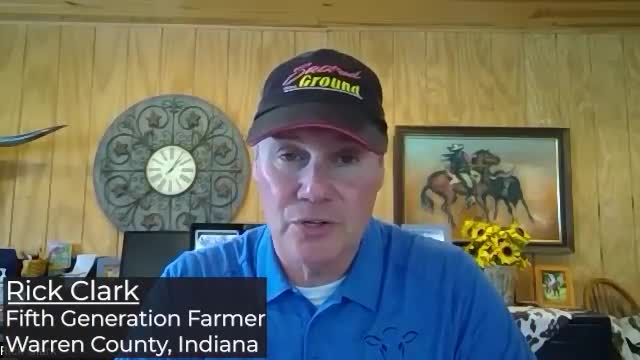Farmer shares secrets to successful regenerative agriculture
July 06, 2024 | Robert F. Kennedy Jr., Presidential Candidates 2024

This article was created by AI summarizing key points discussed. AI makes mistakes, so for full details and context, please refer to the video of the full meeting. Please report any errors so we can fix them. Report an error »

In a recent government meeting focused on agricultural practices, a farmer shared insights on the successful implementation of regenerative farming techniques, particularly the use of cover crops like tillage radishes. The farmer described a method where tillage radishes were planted after harvesting beans, allowing the plants to grow and develop deep roots that help mitigate soil compaction and sequester nutrients. This practice, he noted, does not involve harvesting the radishes but rather using them to improve soil health.
The farmer conducted a comparative analysis on 200 acres of land, splitting it into two sections: one treated with traditional tillage and the other using a no-till approach. The results were telling; the no-till section yielded better results and provided a higher return on investment due to reduced tillage costs. This success prompted the farmer to consider expanding regenerative practices across his entire operation, although he cautioned others to proceed with caution. He emphasized the importance of starting small to avoid jeopardizing their livelihoods.
Over four years, the farmer transitioned to using cover crops on every acre, noting significant improvements in soil health indicators such as water infiltration and earthworm populations. He advised fellow farmers to establish a baseline for their soil health through sampling and analysis before making large-scale changes. This data-driven approach allows farmers to track improvements in fertility and yield, ensuring that their practices are effective and sustainable.
The farmer's experience highlights the potential benefits of regenerative agriculture while underscoring the need for careful planning and gradual implementation to safeguard the financial stability of farming operations.
The farmer conducted a comparative analysis on 200 acres of land, splitting it into two sections: one treated with traditional tillage and the other using a no-till approach. The results were telling; the no-till section yielded better results and provided a higher return on investment due to reduced tillage costs. This success prompted the farmer to consider expanding regenerative practices across his entire operation, although he cautioned others to proceed with caution. He emphasized the importance of starting small to avoid jeopardizing their livelihoods.
Over four years, the farmer transitioned to using cover crops on every acre, noting significant improvements in soil health indicators such as water infiltration and earthworm populations. He advised fellow farmers to establish a baseline for their soil health through sampling and analysis before making large-scale changes. This data-driven approach allows farmers to track improvements in fertility and yield, ensuring that their practices are effective and sustainable.
The farmer's experience highlights the potential benefits of regenerative agriculture while underscoring the need for careful planning and gradual implementation to safeguard the financial stability of farming operations.
View full meeting
This article is based on a recent meeting—watch the full video and explore the complete transcript for deeper insights into the discussion.
View full meeting